














Manila Archbishop: Goal of Traslación to see, be found by, and manifest Jesus
THE ULTIMATE goals of the Traslación of the image of the Black Nazarene are to see Jesus, be found by the Son, and manifest the Savior toward others, Manila Archbishop Jose Cardinal Advincula told devotees during the Misa Mayor at midnight on Tuesday, Jan. 9, at the Quirino Grandstand.
Anchored on the theme “Ibig namin makita si Hesus (We want to see Jesus),” the mammoth procession is an opportunity for the faithful to look at Jesus to live an everlasting life, the archbishop said.
“Gusto niyang makita natin Siya,” Advincula said in his homily, adding, “Kaya’t manalig tayo sa Kaniya.”
In seeking out Jesus, the faithful should be assured that the Lord watches over them as they go through the different hardships of life – sickness, exhaustion, loneliness – the archbishop said.
“Walang karanasan ng tao na hindi nakikita at nauunawaan ng Poong Hesus Nazareno,” he said. “‘Pag nakita tayo ni Hesus, tatangkilikin niya tayo, tutulungan niya tayo, sasamahan niya tayo at bibiyayaan niya tayo.”

DESPITE a rope snapping and some devotees ignoring the rule not to climb the carriage or andas, Traslación 2024 ended up as the swiftest in over a decade, just 50 seconds shy of clocking in at 15 hours.
The image of the Black Nazarene arrived at Quiapo Church at 7:45 p.m., 14 hours, 59 minutes, and 10 seconds after the start of the procession at Quirino Grandstand at 4:45 a.m.
This marked the fastest Traslación since 2010, when the carriage entered the gates of Quiapo Church after more than 15 hours on the road.
The Quiapo Church Command Post’s crowd figures showed more than 6.5 million people participated in the nearly

four-kilometer procession, roughly three times what officials expected.
“‘Yong nangyari pong kagabi na Traslasyon, masasabi po natin na matagumpay, naitawid po natin ng maayos at ‘yon naman po talaga inaasahan natin,” Police Maj. Philipp Ines, spokesman of the Manila Police District, told CNN Philippines on Wednesday, Jan. 10.
The streets of Manila turned into a sea of passionate followers wearing maroon and yellow shirts as the traditional Traslación was brought back after a three-year hiatus due to the Covid-19 pandemic.
A few hitches slowed the procession.
While traversing Arlegui Street, the rope used to pull the carriage snapped,

‘V’ reaps 4 plums
THE UNIVERSITY won a total of 19 awards in the 10th Philippine Student Quill Awards, a tilt recognizing outstanding communication-related outputs by students across the country.
Including four awards won by the Varsitarian (‘V’), UST tallied the second highest number of awards among participating schools, next to De La Salle - College of Saint Benilde which had 22 winning entries.
The ‘V’ won in the publications category with its Paskuhan 2022 issue, the first print edition since the Covid-19 pandemic.
"Protest vs Marcos Jr. as UST fine arts grads wear pink masks," a feature story on the protest staged by College of Fine Arts and Design graduates during their solemn investiture rites, by Faith Gelacio and Judd Crescini of the Varsitarian, reaped an award in the writing category.
The ‘V’ also emerged victorious in the audio/visual category, earning citations for its 2022 Baccalaureate Mass and Paskuhan 2022 video productions.
for
classes
prompting some devotees to bring the rope back to Quiapo Church around 1 p.m.
But for Alex Irasga, technical adviser to Nazareno 2024, the rope incident did not delay the carriage significantly.
“Hindi po nakakaapekto sa pangangasiwa ng ating andas ang lubid,” he said in a press conference on Tuesday, Jan. 9. “Sa marami pong pagkakataon siguro, namatiyagan ninyo na minsan, nauuna po ang andas kaysa sa lubid.”
“Ang lubid po ay andiyan para po sa mga deboto na may pamamaraan pa rin sila na tinatawag na pamamasan,” he added. Some devotees also ignored the new

THE PYROMUSICAL display at this year’s grand Paskuhan concert was an homage to peace amid worldwide tensions, incorporating popular antiwar songs in the seven-minute show.
What started as a Super Mario-themed display turned into an emotional show, featuring wellknown antiwar songs like John Lennon’s “Imagine,” Lennon and Plastic Ono Band’s “Give Peace a Chance,” and Michael Jackson’s “Heal the World.”
Fr. Dexter Austria, O.P., from the Facilities and Management Office, had said that this year’s Paskuhan, themed “Witnessing the Joy of Christmas,” would carry a deeper significance due to conflicts in various parts of the world.
“Our pyromusical will revolve around joy and peace [because] the Christmas season is all about joy and peace–that’s what we are looking forward to,” Austria told the Varsitarian prior to the event. “That joy will bring about peace in our heart because it’s chaotic, the world is chaotic.”
“Right now, since there is war, we need to look for the significance of our Paskuhan–it’s not just merrymaking, happiness, shouting and celebrating, but more.”
The Grandstand and Open Field hosted performances by BINI, Lola Amour, Cup of Joe, Lily, Adie and Janine Berdin.
The concert featured winning bands from the Tunog Tomasino 2023 battle of the bands, Kler, Benchfly, and Mimosa.
There were also performances by the Sinag Ballroom Dance

Company, 1Shade, Archetypes, UST Prime, Salinggawi, UST Yellow Jackets, Benchfly, Salinggawi, Mimosa, and BA Dauncen, Pharmacy Dance Troupe, College of Science Dance Troupe, Oh Stella, and Intenzyc. For the second consecutive year, the concert was restricted to Thomasians and UST alumni. Upon entry, attendees were provided with a wristband signifying their admission, and separate gates were assigned for students and alumni.
Theresa Venturina, a medical technology freshman, said the entry protocols this year were more organized than last year’s.
“This year it was not disorganized in terms of the tapping of IDs, and it was just one-way with entry and exit points and wristbands,” Venturina said.
Like Venturina, senior accountancy student Gouhld Galliguez remarked that the crowd control at the gates was “better,” and the process of entering the campus was “very easy.”
Gates close early UST shut its entrances during the Grand Paskuhan Concert at 7 p.m., resulting in frustration and disappointment among those un-
able to enter the campus.
In a notice on X (formerly Twitter) posted at 7:45 p.m., the UST Central Student Council (CSC) announced that gates were closed at 7 p.m “for safety and security of the Paskuhan attendees inside the campus,” citing a directive from the Campus Safety and Security Office.
“We regret to inform everyone of this announcement,” the CSC said in a follow-up post. Information was handed out to us spontaneously from the Security Office.”
“Although we coordinated and
New form of amoeba present in lakes, rivers a ‘public health threat’ if undetected
By Sofiah Shelimae J. Aldovino
BETWEEN 20,000 and 30,000 travelers annually visit Mt. Makiling in Los Baños, Laguna, to hike, swim on the hot springs found along the trail and witness the water bubble at the volcanic mud springs with a temperature of around 73 degrees Celsius.
Humans, of course, cannot swim in the mud spring because they will suffer from severe burns and tissue damage.
One parasite, however, can withstand the excruciating heat that, if left undetected in other forms of water, could cause eye and brain diseases to people and pose a health threat among tourists.
Senior Medical Technology students – Criselle Selis, Isabella Caburnay, Angela Cunan, Aleli Cuevas, Fritz Irish Avila, Piolo Blanco and Kenneth Banal – found that a free-living amoeba, possibly a new species of the genus Acanthamoeba, has been thriving at a mud spring in Makiling even though the organism typically survives up to temperatures of just 45 degrees Celsius.
“[T]his organism is highly thermophilic, and when free-living amoeba becomes highly thermophilic, it becomes more virulent, which means it can cause disease,” Asst. Prof. Giovanni Milanez, a faculty member at the UST Department of Medical Technology who served as the research adviser, told the Varsitarian. “So the more virulent they are, the more fatal conditions they can induce in mammalian hosts.”
The study, titled “First report of Acanthamoeba spp isolation from Flat rock streams and volcanic mud spring in the Philippines,” won the international award for research at the Japanese Association of Clinical Laboratory Systems (JACLaS) Expo 2023 held in Yokohama,
By Eduardo G. Fajermo, Jr. and Ralent M. Penilla
THE CHINA Coast Guard continues to harass Filipino vessels within the Philippine Exclusive Economic Zone (EEZ), raising concerns over escalating tensions triggered by Beijing’s provocative actions.
The latest provocation came on Sunday, Dec. 10, when the Chinese Coast Guard rammed and used water cannons to prevent Philippine vessels en route to Bajo de Masinloc from conducting a routine resupply mission, according to videos posted by the Philippine Coast Guard (PCG) on X, formerly Twitter.
President Marcos on Sunday condemned the aggression, saying it “further steeled” the country’s “determination to protect our nation’s sovereignty” in the contested waters.
“We remain undeterred,” Marcos said in a statement.
In interviews with the Varsitarian before the water cannon incident, experts observed that the Philippines was placed in a precarious position ever since it became more assertive of its territorial rights backed by its 2016 victory in the Hague and drew back closer to its longtime ally, the United States (US), after years of appeasing China.
“Sino-Philippine relations are currently at a deadlock with respect to the territorial and maritime disputes, but the Philippine position is in the correct position of standing up for its rights and entitlements against China’s excessive and unfounded claims,” Jay Batongbacal, the director of the Institute for Maritime Affairs and Law of the Sea of the University of the Philippines (UP) Law Center, said.
Clashes between China and the Philippines have increased this year. The Chinese military has used military-grade lasers and long-range acoustic devices that caused temporary blindness and impaired hearing in Filipino crew members and shadowed over small vessels that ended up with minor collisions, all in the name of defending its sovereignty.
And in a reversal of previous foreign policy, Marcos noticeably mended the country’s frayed relationship with the US after his predecessor, Rodrigo Duterte, cozied up with Beijing.
“We are facing new challenges and I couldn’t think of a better partner to have than you,” US President Joe Biden told Marcos in May when the latter visited the White House.
“The US also remains ironclad in our commitment to the defense of the Philippines, including in the South

China Sea, and we will continue to support the Philippines military modernization.”
In response, China had repeatedly accused the US of stirring up tensions in the contested waters to divide countries. “The US instigated and emboldened the Philippine side to infringe upon China’s sovereignty, which escalated maritime tensions,” said China’s Defense Ministry spokesperson Wu Qian in November. “The US is not a party involved and its interference will only make things worse.”
Leaning to China has not been a good approach, however.
Research by Prof. Renato de Castro of the Department of Inter-
national Studies at the De La Salle University concluded that the Duterte administration reluctantly shifted its approach to China from appeasement to “limited hard balancing,” which is employed by some countries that failed to counter a competitor’s strategies by embarking on semi-formal partnerships, as the superpower reneged on its promises to invest in the government’s signature Build, Build, Build program and allow increased naval presence in WPS’s artificial islands.
Jonathan Malaya, the assistant director general of the National Security Council, admitted that the Duterte-era strategy was fruitless but continues to be a guide for Marcos to
avoid repeating any mistakes.
“I think ‘yong experience natin under Pangulong Duterte informed the decision-making right now,” Malaya said. “Kasi nung panahon [niya], we tried to engage with China very closely, at wala naman tayo masyadong napala.”
“Having learned from that experience, President Marcos said na, ‘You know, we will continue talking.’ Kausap niya lang si Xi Jinping sa San Francisco, pero we will not be bullied.”
‘Take notice’
With diplomatic talks with China now unfeasible, Manila must turn to other means to keep Beijing’s harassment a political stain.
“[I]-threaten ang China with more cases na filed sa international courts,” political analyst Ronald Llamas said. “We want the world to take notice.”
In October, the administration announced its intentions to pursue a fresh case against China before an international tribunal over “innumerable and immeasurable” damage done to the environment due to coral harvesting.
Dr. Deo Florence Onda, a scien-
WITH THE introduction of artificial intelligence (AI) into the newsroom, veteran documentarist Kara David encouraged campus journalists to enhance their storytelling skills during the second day of the 25th Inkblots, the annual UST national campus journalism fellowship, on Jan. 12.
David stressed the role of storytelling in journalism, saying that the ability to recognize a good story is irreplaceable.
“Ang media ay hindi pagalingan ng tech, hindi pagandahan ng aesthetics or paramihan ng mga drone shots. It’s about a story,” she said. “If you have a bad story, no matter how great your aesthetics are, it’s still a bad story.”
“Aim for stories that are life-changing. Aim for stories that are timeless,” she added.
Dominic Ligot, a software developer and AI expert, said journalists need to be well-informed about AI to anticipate its adverse impacts and leverage its potential for their benefit.
“The more awareness we can generate about generative AI, the more we can guard against its negative effects [and] also use it for positive outcomes.”
Rappler senior reporter Paterno Esmaquel II said the human touch cannot be replicated by AI when covering stories.
In his lecture on religion reporting, Esmaquel reminded journalists to “look deeper” and “pierce the veil” when covering a beat.
“AI can help us in news gathering,


but nothing can really substitute for showing up,” he said.
“We have to be open to evolution, but of course, don’t forget your mission of telling the story to the people.”
UST alumna and award-winning photojournalist Lisa Marie David warned against online manipulation in the photo editing process.
David said AI cannot fully replace human journalists, especially in the field of photojournalism.
“Photojournalism remains relevant as long as we keep on producing relevant work,” she said. “In journalism, it’s a misconception that we only click the shutter button. Having that kind of mindset can dumb us down. We are humans, we constantly grow and that’s something AI cannot do.”
The 25th installment of Inkblots, the Varsitarian’s annual campus journalism fellowship, carried the theme “Innovating Campus Journalism in the Age of AI.”








ONLY mediocre writers should be worried about the rise of artificial intelligence (AI), veteran anchor Ed Lingao said, as chatbots like ChatGPT produce just ordinary sentences.
Even if chatbots learn the strict rules of grammar and syntax and process data faster, they cannot replicate the kind of reportage expected of journalists, the TV5 newsman told participants of the Varsitarian’s 25th Inkblots, the annual fellowship between campus journalists and journalism practitioners.
“Hindi siya magaling magsulat; magaling siya magsulat ng ordinaryo,” Lingao said in his keynote address on Thursday, Jan. 11. “You’re good in being mediocre, that’s what ChatGPT is. That should be comforting.”
Chatbots, a form of generative AI, get their information by feeding their language models with data scraped from various sources, including websites, social media posts, and algorithms.
This process has worried news publishers because it not only siphons readers but also violates copyright laws.
In an analysis titled “White Paper: How the pervasive copying of expressive works to train and fuel generative artificial intelligence systems is copyright infringement and not a fair use,” the News Media Alliance, a group of over 2,000 publishers in the United States, claimed







that generative AI was unfairly reaping benefits from content laboriously created by publishers.
“Generative AI systems, while holding promise for consumers, businesses and society at large, are commercial products that have been built – and are run – on the backs of creative contributors,” it stated in its October 2023 report. “These systems have been developed by copying massive amounts of the creative output of the Alliance’s members, almost always without authorization or compensation.”
“The incipient and predictable consequence of Generative AI’s substitutive uses will be to damage the news and digital media industry. And it is not just copyright owners



but society that will lose if Generative AI is allowed to so harm the journalism industry,” it added.
One of the Alliance’s members, The New York Times, filed a lawsuit on Dec. 27, 2023, against OpenAI, the company behind ChatGPT, and Microsoft, owner of the recently rebranded chatbot Copilot, for copying millions of articles.
In a blog post on Jan. 8, OpenAI claimed that the lawsuit has “no merit” and reaffirmed its commitment to collaborate with the news media.
“Our goals are to support a healthy news ecosystem, be a good partner, and create mutually beneficial opportunities,” the company




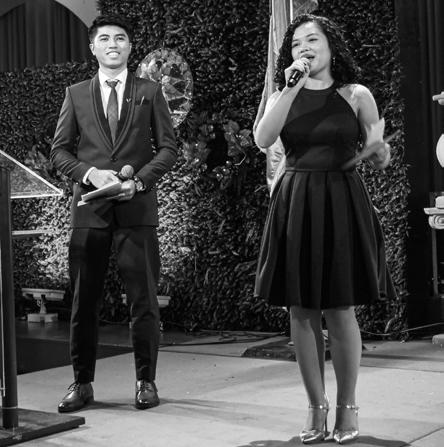





The Catholic Bishops’ Conference of the Philippines (CBCP) has once again raised its voice in the debate surrounding Charter Change, urging Filipinos to approach the issue with careful discernment and prayer. This call comes amid a flurry of activities, with both the House of Representatives and the Senate pushing for constitutional amendments, and proponents of a People’s Initiative gathering signatures.
In a statement, CBCP President Bishop Pablo Virgilio David lamented the questionable intentions behind the signature campaign.
“It seems that this people’s initiative was initiated by a few public servants and not truly from the initiative of ordinary citizens,” the CBCP said. “If that is the case, it involves deception and disregard for our true and free participation in the democratic process of our country.”
Filipinos, the conference said, must be cautious in signing any petition that may eventually “exploit” the country.
“Our prayer is that we will not sign or agree to any petition without careful discernment, discussion, and prayer,” the CBCP said. “Let us not allow such deceptive systems to continue, encouraging
those who continuously exploit our nation. Truly, this is not good!”
The CBCP’s concerns are well-founded. The 1987 Constitution stands as a hardwon symbol of our nation’s struggle for democracy and freedom, crafted in the wake of a dark period in our history—
exploitation. We must be vigilant against such practices that undermine the integrity of the process and ultimately, the will of the people.
The proposed amendments themselves warrant close scrutiny. While economic development is a legitimate concern, we must ensure that any changes do not
The CBCP’s call goes beyond simply highlighting deception. It urges Filipinos to engage in informed and prayerful discernment, echoing the synodal spirit of critical reflection and responsible participation.
the Marcos dictatorship. It is crucial to remember the context in which it was created and the values it enshrines.
The deceptive tactics employed by some seeking Charter Change are particularly alarming. The CBCP rightfully highlights irregularities in the signature-gathering process for the people’s initiative and raises concerns about manipulation and
undermine the fundamental principles of our Constitution, such as checks and balances, separation of powers, and safeguards against abuses of power.
Filipinos cannot afford to be complacent or swayed by empty promises or deceptive tactics. Amending the Constitution is a serious undertaking with far-reaching consequences. It
requires a thorough understanding of the proposed changes, their potential impact, and the motivations behind them.
Just as the Church emphasizes the importance of hearing all voices in its deliberations, so too should the process of amending our national charter be built on genuine consultation and informed consent. Deceptive tactics that mislead citizens into signing petitions without full understanding not only violate this principle but also risk undermining the legitimacy of any proposed changes.
The CBCP’s call goes beyond simply highlighting deception. It urges Filipinos to engage in informed and prayerful discernment, echoing the synodal spirit of critical reflection and responsible participation.
The Church’s emphasis on synodality reminds us that true progress arises from genuine dialogue and collaborative discernment. It is a call to move beyond superficiality and manipulation, to engage in honest conversations and critical analysis. Only through such a process can we ensure that any changes to our Constitution are truly reflective of the collective will of the people and serve the long-term well-being of our nation.

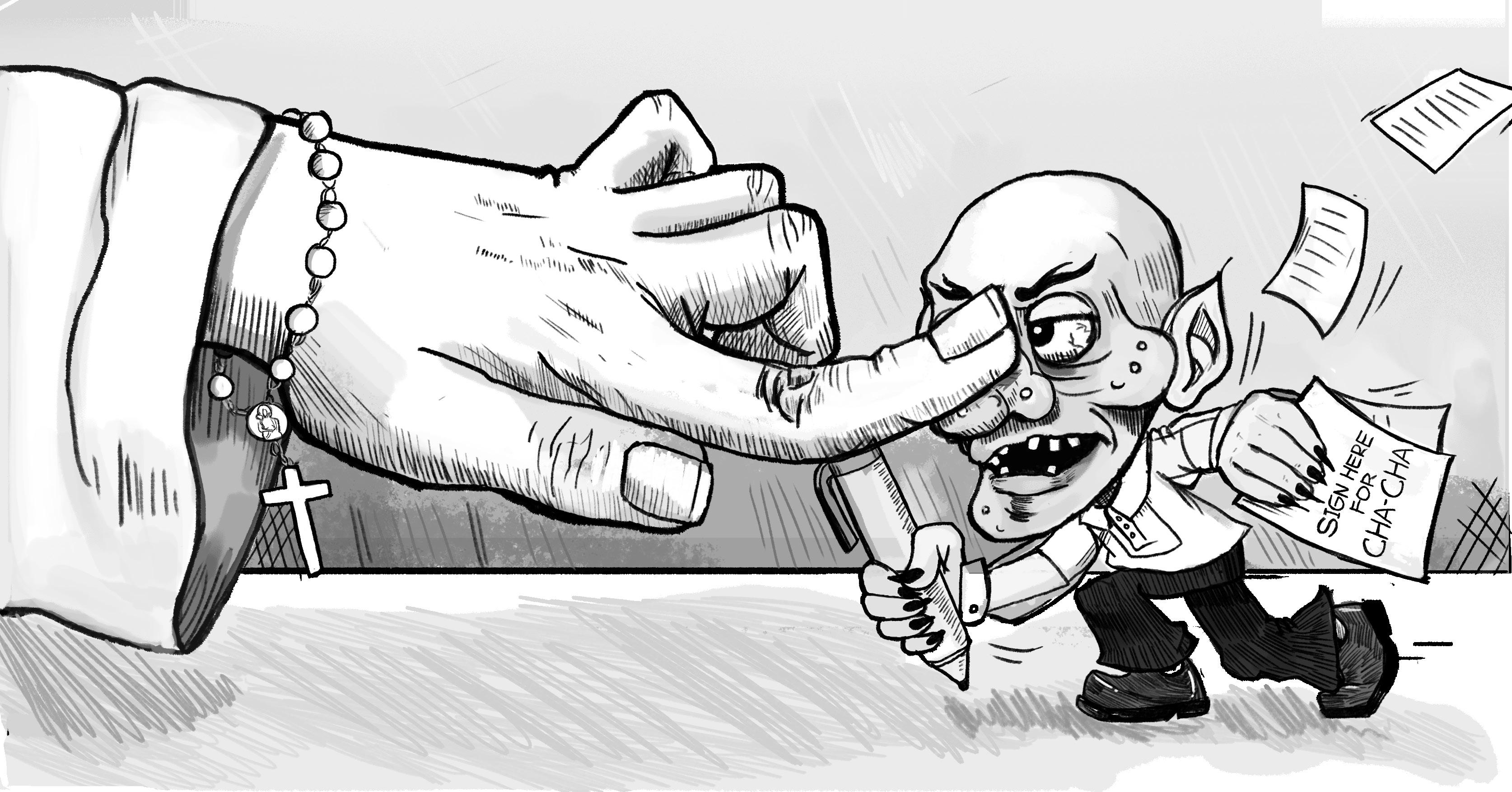


COORDINATOR: ANGELI RUTH R. ACOSTA
Inkblots FROM PAGE 3 ►
said. “We look forward to continued collaboration with news organizations, helping elevate their ability to produce quality journalism by realizing the transformative potential of AI.”
Keeping up with AI
The advent of chatbots has raised the question of whether AI will eventually replace journalists, as some editors had conceded that “machines were writing better than many humans,” Lingao said.
“ChatGPT and other bots are now writing better than us, and that is a point of major concern because ChatGPT is not an excellent writer,” he said. “That should be shaking us to the core [dahil] hindi na nga magaling ang AI, naiisahan pa tayo.”
“‘Yong judgment day natin, hindi pala nuclear war. Ang judgment day ng mga reporter ay bad writing. Mas magaling pa ang mediocre AI sa atin,” he added.
Lingao urged campus journalists to level up their game.
“It goes back to you guys in the field,” the veteran anchor said. “Reporting is not just about writing. Reporting starts with number one, research, and number two, talking to sources.”
“Lumabas kayo. Galingan niyo. Mangulit kayo. Mangalampag kayo kasi ‘di magagawa ng ChatGPT ‘yon.”
John Nery, a Rappler columnist and editorial consultant, said AI promotes a media landscape rife with complacency and laziness. He urged fellows to adjust their writing styles to navigate these potential pitfalls.
“I think that once we recognize that the machines are learning to write better than us, then we need to adjust our writing,” he said. “You see that there is an evolution in style. It would be a challenge for individual writers to stay ahead.”
Nery lectured on opinion and editorial writing.
Political journalist Christian Esguerra, who founded Inkblots in 1999, said the campus press should not fear AI as it has been in use for “quite some time now.”
“Artificial intelligence can help us better understand our audience…because of artificial intelligence, you get a better sense of
audiences’ perspectives,” he said.
Esguerra described AI as the “third-biggest disruption” in journalism, with other disruptions involving people and technology.
“AI can help, but if it will be used to produce scripts, you’re cheating yourself ultimately,” he added.
UST journalism program head and Varsitarian assistant publications adviser Felipe Salvosa II said that while AI is utilized for data analysis and identifying trends in news, campus journalists must ensure the integrity of AI-driven information.
“Keep the human touch, keep it authentic, and ensure the integrity of the publication through appropriate disclosures,” he said.
The campus press should “rise to the challenge” of AI, according to Inquirer sports editor Francis Ochoa.
“AI is fast, AI is efficient, but it’s not as powerful as we think it is. We have to rise to the challenge [and] there’s no silver bullet, [so] we have to manage the risks,” he said.
Ochoa urged the campus press to “write better” and “apply human touch” as their edge against AI-generated content.
Manila Bulletin entertainment columnist Nestor Cuartero, a former UST journalism faculty member, encouraged the campus press to strive for truth.
“Be certain that everything you write is accurate and honest as you can make it. As journalists, we try to strive for truth,” Cuartero said in his feature writing lecture that featured a mock press conference with MMFF Best Actor and “Gomburza” star Cedrick Juan.
The 25th installment of Inkblots, the Varsitarian’s annual campus journalism fellowship, carried the theme “Innovating Campus Journalism in the Age of AI.”
It was the first time in four years it was conducted on-site after the Covid-19 pandemic, with nearly 300 fellows from 39 schools and student publications nationwide. WITH REPORTS FROM SOFIAH SHELIMAE ALDOVINO, FAITH NICOLE GELACIO, HANNAH JOYCE ANDAYA, AND JUDD ERICKA MARIE CRESCINI

Tiger Media Network (TMN), the University’s official broadcasting arm, reaped eight accolades in the 10th Philippine Student Quill Awards.
‘V’ circle writer Alyanna Tamaray snagged an award in the special and experiential events category for the “TR Streamliner” program produced under Tiger Radio of TMN.
The Flame, the official student publication of the Faculty of Arts and Letters, won three prizes. Students from the UST Department of Communication and Media Studies were also recognized in the tilt.
Winning the School of the Year title was De La Salle-College of Saint Benilde, which reaped six excellence awards and 16 merits.
UST, in its second year, placed first runner-up with three excellence awards and 16 merits.
Colegio de San Juan de Letran, which bagged 15 awards,
By Jan Alyanna G. Tamaray
A THOMASIAN painter drew inspiration from board and card games in his first solo exhibition on Jan. 7 at the Secret Fresh gallery in San Juan.
David Requilme, who studied painting at the University, showcased a series of surrealist paintings incorporating elements from playing cards and chess in his exhibit titled “Equilibrium.”
At the show’s centerpiece was the titular “Equilibrium,” a series of three paintings depicting chess pieces, warriors, heavenly figures, and animals.
The middle frame was a 48×36-in. piece featuring two elderly kings competing in a game of chess while surrounded by a winged angel and a horse, as a man with a clock as his head looms over them.
The other two 36×24-in. oil on canvas paintings portray a lion and an eagle, each donning a crown while also surrounded by figures of warriors and chess pieces.
According to Requilme, the series was inspired by his artistic and life journey.
“Basically, it’s [about] finding that balance,” he told the Varsitarian. “I came across the word ‘equilibrium,’ which is two opposing forces influencing one another to their balanced state. So, each painting represents a different

status of human, whether conscience, physical, social nature, et cetera.”
Also on exhibit was the 36×48-in. piece “Collision,” which depicts a black and a white horse–resembling the knight piece in chess–charging one another.
The painting graduate also exhibited a 48×36-in. work featuring a woman wearing a bishop’s miter while surrounded by other chess pieces, titled “Discernment.”
“Arbiter,” a 24×18-in. piece, and “Watcher,” a 20×16-in. work, resemble the king and queen chess pieces as they feature a man and woman dressed in royal clothing, with clocks as heads.
“Conscience” shows a head and a torso on top of a column, surrounded by diamond and spade symbols.
Requilme graduated from the College of Fine Arts and Design in 2015. According to the Thomasian artist, he gravitated toward surrealism because of the freedom for “endless creativity” that the genre allows.
“I don’t feel contented when I’m stuck with doing one thing…I want to do everything,” he said.
“Even I do not know the end result, I just do it. I just live in the moment while creating the art piece,” he added. Requilme’s “Equilibrium” exhibit will run until Jan. 19.

rule not to climb the carriage, which was enclosed in a bulletproof glass case made by local jeepney manufacturer Sarao Motors Inc.
The return of the traditional Traslación also saw the return of images of people pushing each other amid a sea of devotees.
Marlou Jay Mata, 28, who joined the procession for the first time, said being sandwiched in the crowd was a different experience for him.
“Sa agos ng andas, nag-aalinlangan din ako kasi nakaranas na rin naman na ako ng ganito ka-crowded at sobrang daming tao pero ‘yong siksikan kasi, sobrang nakakadiin,” he told the Varsitarian
The Philippine Red Cross responded to more than 700 individuals needing medical assistance. Six of them
were major cases, such as head trauma, severe chest pain, and a fracture on the left ankle, among others.
By 3 p.m., the carriage reached Plaza del Carmen, the site of the San Sebastian Church where the traditional “Dungaw” takes place.
“Dungaw,” according to former San Sebastian rector Fr. Rommel Rubia, O.A.R., is a religious courtesy between the Black Nazarene and Our Lady of Mount Carmel, regarded as the “king” and “queen” of Quiapo. It does not reenact the meeting of the Our Lady of Mount Carmel as a weeping mother watching her son, the Black Nazarene, go into the calvary.
Devotees at the sidelines of the procession were overjoyed at the return of the festivities.
Leticia Soliven, 62, a follower of the
Black Nazarene since high school, has been giving free bottles of water as her way of devotion to Jesus.
“Alam naming uhaw na uhaw sila at pagod na pagod,” she told the Varsitarian, adding, “Nararamdaman namin ‘yong pagod nila. Ito po ay way namin ng pamamanata [kaya] pati buong barangay namin ay nagbibigay na rin.” Black Nazarene handkerchief vendor Angelo David, 28, said the mammoth crowds participating in the Traslación did not hinder him from going.
“Parang hinihikayat Niya ang aking mga paa,” he told the Varsitarian. “Kahit na sabihin kong ayaw ko, pero magugulat ka, kinabukasan, andito na ako.” A.B. MAESTRADO WITH REPORTS FROM SHEILA MAY S. BALAGAN AND FERNANDO PIERRE MARCEL B. DELA CRUZ

came as second-runner up with three excellence awards and 12 merits.
Other schools that reaped awards were Far Eastern University (6), UST Angelicum College (2), De La Salle University - Dasmariñas (2), Holy Angel University (2), Philippine High School for the Arts (2), and San Beda University (1).
The Philippine Student Quill Awards, under the prestigious Philippine Quill Awards organized by the International Association of Business Communicators, is one of the biggest competitions in the country that recognizes exemplary work in business communications.
The 10th edition of the awards saw the most number of entries in its history, drawing over 800 entries from various schools nationwide.
The awarding ceremony was held on Jan. 23.
confirmed this with the right offices, the Central Student Council only amplifies the decisions made by the administration.”
Kim Dacanay, a fourth-year history student and former president of the Faculty of Arts and Letters Student Council, expressed disappointment, saying it was “unfair” to students as they were not informed about the cut-off.
“‘Yung sinasabi nilang nagcut-off sila for safety and security ng students, paano naman ‘yung safety and security ng mga nasa labas?” she told the Varsitarian
“CSC released its official guidelines kaninang umaga at wala ito [cut off announcement] doon.”
Kyla Chua, a UST journalism alumna, said alumni faced difficulty meeting the cutoff, as most of them came directly from work.
“Parang walang sense ‘yung
inviting alumni to go to Paskuhan then suddenly announcing the 7 p.m. cut-off,” she said. “What’s the point? Alumni nga, so most probably they are going after work.
Assoc Prof. Juliano Parena Jr., the director for Campus Safety and Security, told the Varsitarian that the University gates were closed to ensure the safety of the attendees.
“We reserve the right as the venue din na i-close natin ng 7 [p.m.].
Sa sobrang dami na ng nasa loob na safe ‘yung occupants, we can actually decide to close, diba? ‘Yun kasi nga, consideration pa rin ng security,” he said.
A total of 39,638 attendees flocked to this year’s Grand Paskuhan Concert. This was not even half of 2019 Paskuhan’s 105,000. WITH REPORTS FROM FERNANDO PIERRE

MARCEL B. DE LA CRUZ AND HANNAH
JOYCE V. ANDAYA
Advincula reminded devotees that as they push each other to come closer to the centuries-old image of the Black Nazarene, they should still manifest Jesus through the practices attached to the traditional Traslación.
“Sa pagtukod natin sa galaw ng prusisyon, ipakita natin si Hesus na nagliligtas sa atin upang hindi tayo mahulog sa kamalian at kapahamakan,” he said. “Sa pagtimon natin sa galaw ng andas, ipakita natin si Hesus na gumagabay sa atin sa tamang landas.”
“Ipakita natin si Hesus na inaakay tayo sa pagbabagong-buhay. Katulad ng ginagawa natin tuwing Traslasyon, magtulungan tayo upang lahat tayo ay makakita sa Mahal na Señor at makaranas sa pagmamahal ng Mahal na Señor,” he added.
Quiapo Church officials estimated that over 175,000 people attended the Misa Mayor. Ammiel B. Maestrado


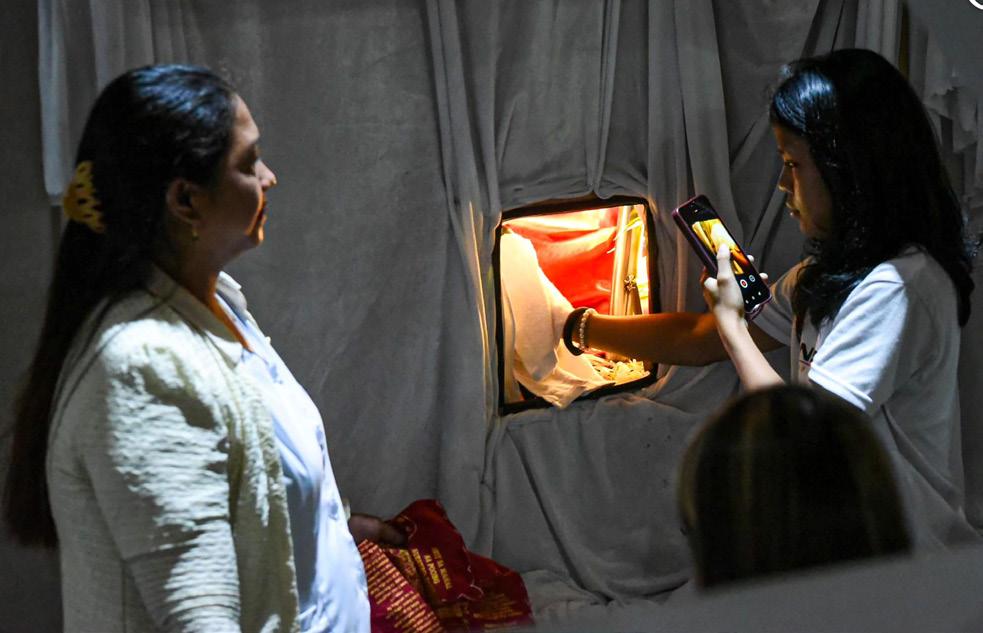
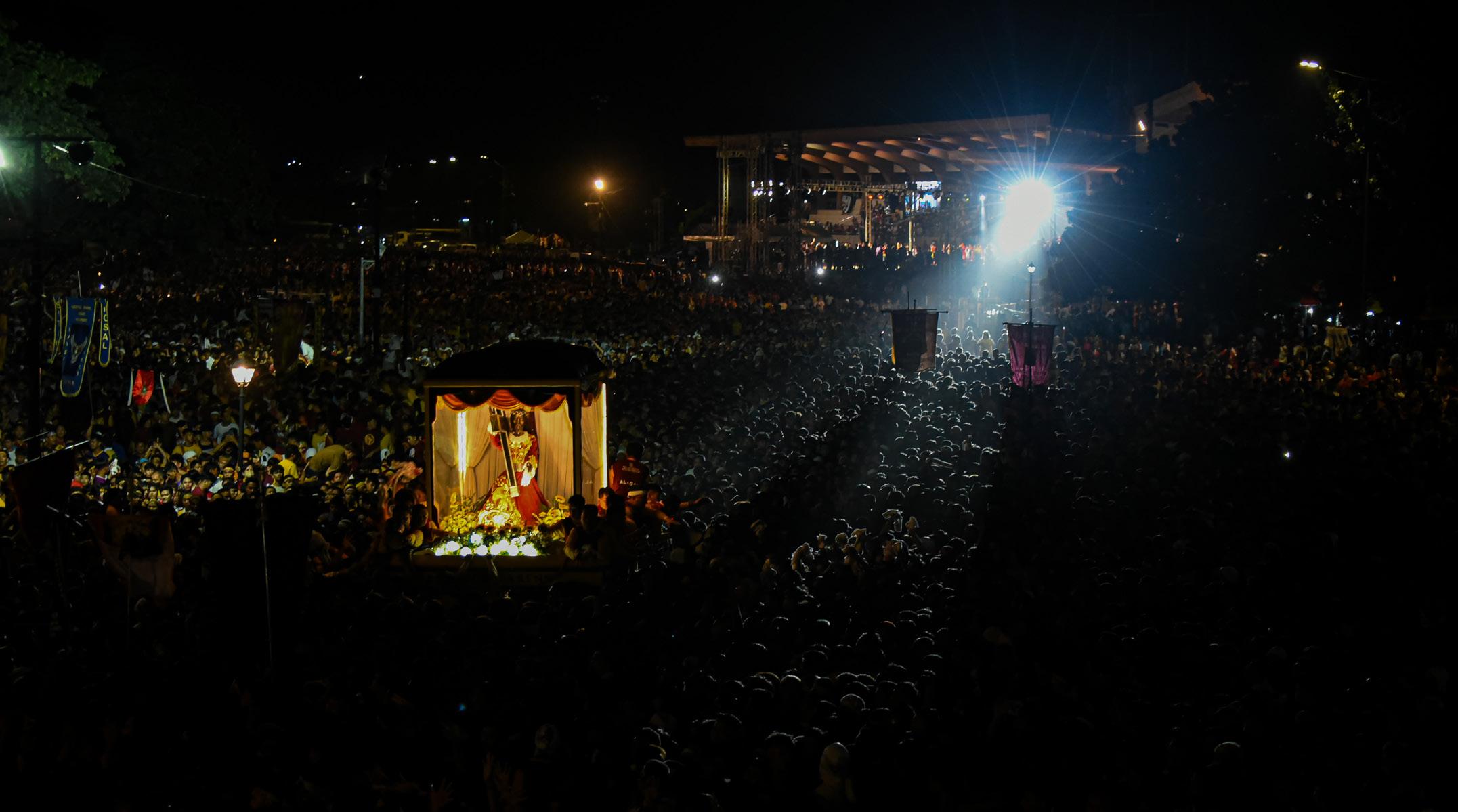


More than 6.5 million devotees join this It took the image of the Black Nazarene nearly It left Quirino Grandstand at 4:45 a.m. and
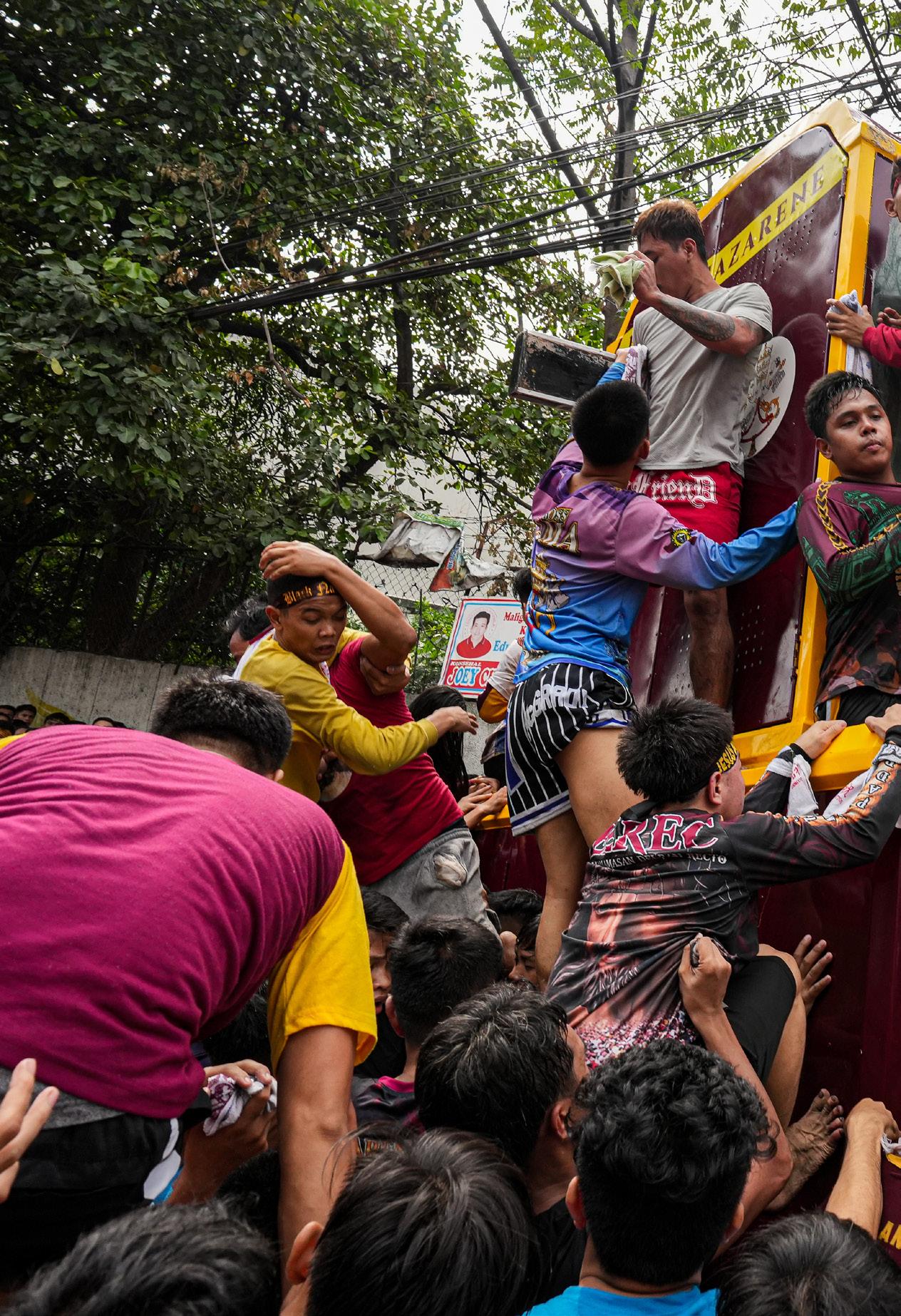


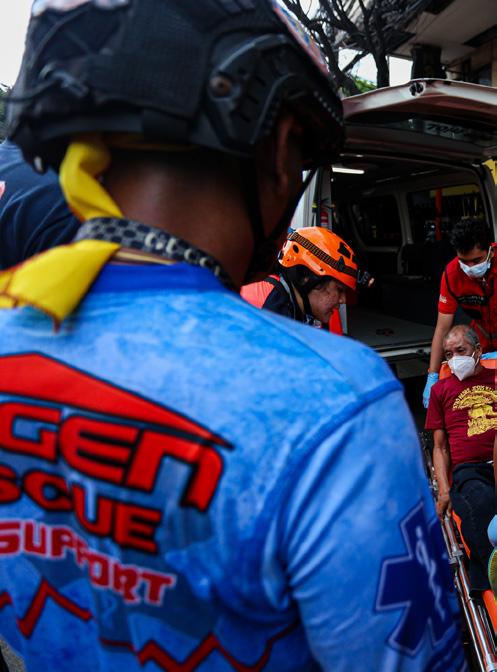

this year’s Traslación on Tuesday, Jan. 9. nearly 15 hours to complete the procession route. arrived at the Quiapo Church at 7:45 p.m.
EDERA, RAINIEL ANGELYN B. FIGUEROA, AND KENNETH CEDRIC M. LANDAZABAL

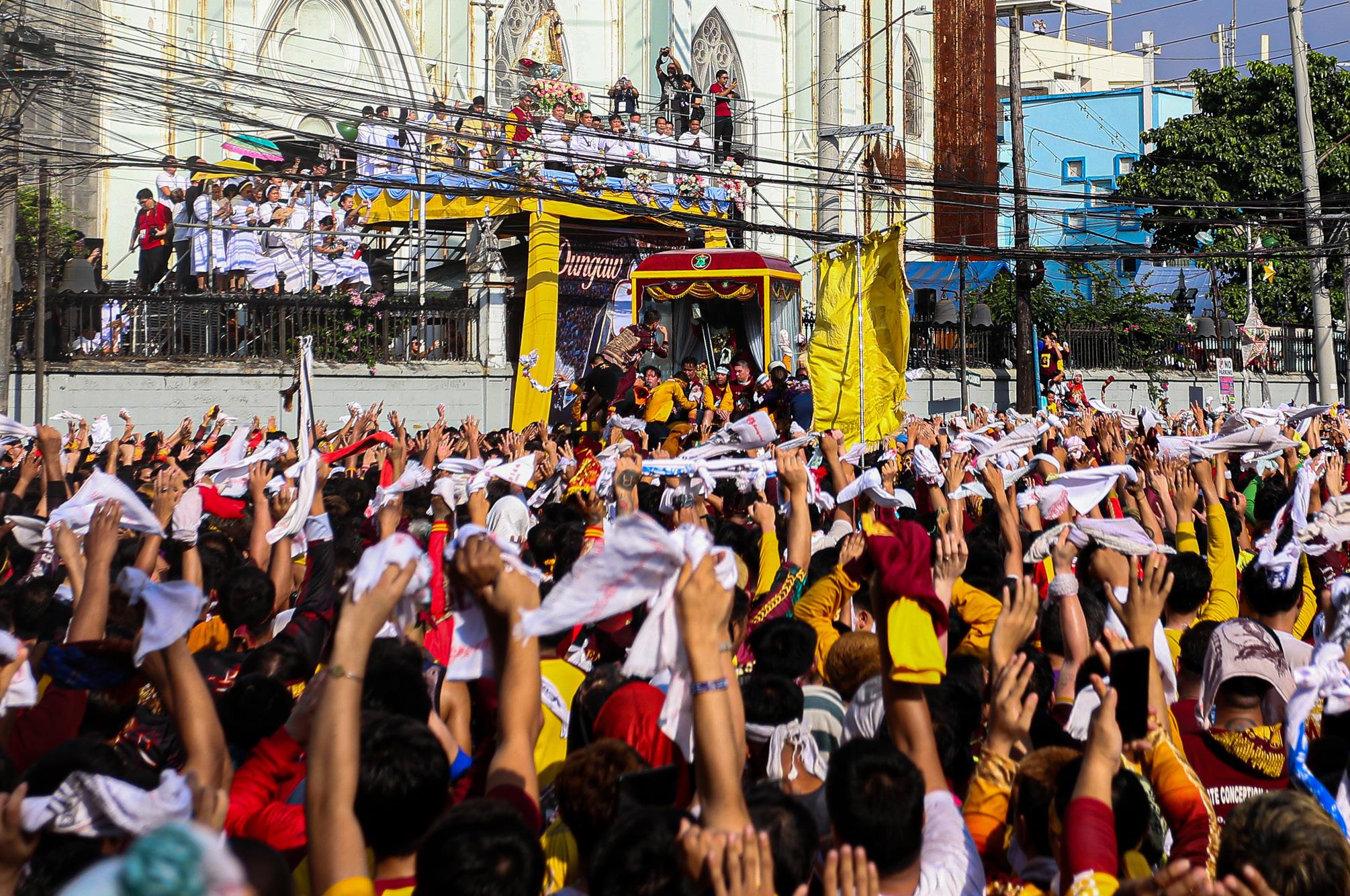

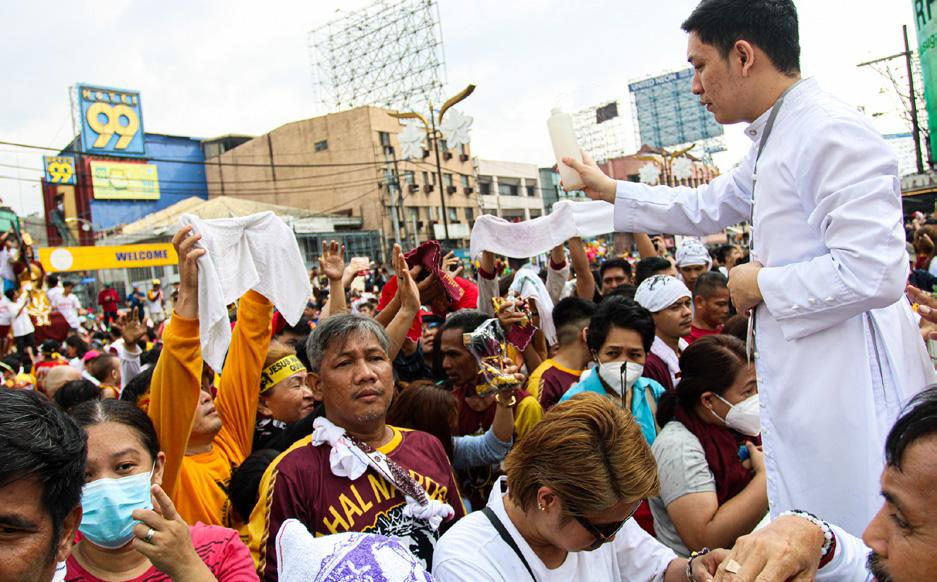









The Grand Paskuhan Concert marks the conclusion of this year’s Paskuhan festivities, taking place at the UST Grandstand and Open Field on Thursday, Dec. 21.






















Japan, from Oct. 6 to 8. Medical Technology faculty members Asst. Prof. Frederick Masangkay, Prof. Edilberto Manahan and Prof. Ma. Frieda Hapan served as co-advisers. Health authorities have often cited boiling water as an effective procedure to kill viruses, bacteria, protozoa and pathogens because it damages their structure and life processes.
Not Acanthamoeba. Its heat resistance is “the first of its kind,” said Milanez, and it is present in freshwater sources such as lakes and rivers. If direct contact occurs, one of the severe infections resulting from it is Acanthamoeba Keratitis, a condition that affects the transparent outer layer of the eye called the cornea. The amoeba consumes the cornea’s layers and causes tissue de-
struction as it traverses the eye.
This rare infection, though not contagious, can cause permanent vision loss or eye impairment.
Another attributable disease is Granulomatous Amebic Encephalitis, wherein patients exhibit seizures, headaches and skin lesions. Survival is unlikely as death comes between seven and 120 days on the onset.
“Acanthamoeba organisms can climb […] the olfactory bulb, and then eventually go up the brain; the problem is we do not have an established diagnosis protocol in our hospitals,” Milanez said. “[W]e don’t have a based therapeutic regimen. So meaning, walang gamot.”
Based on data from the World Health Organization (WHO), the overall mortality rate for Acanthamoeba infections is estimated to
tist currently part of UP Marine Science Institute, reported in 2019 that the country was losing more than P33 billion annually from damaged reef ecosystems at the Scarborough Shoal and Spratly Islands because of China’s reclamation and illegal fishing operations.
However, the ICC junked a similar case filed in 2019 by former Ombudsman Conchita Carpio-Morales for lack of jurisdiction.
Still, DOJ State Counsel Fretti Ganchoon believes any legal challenge against China will be successful because of the level of aggressiveness the superpower exhibits.
“We always have that option of filing cases; it’s one of the tools that we can use, and we have one already in the arbitral award,” she said. “That
be around 95 percent.
In comparison, amoebiasis, the commonly known disease attributed to amoeba that is spread through feces and caused by Entamoeba histolytica, has a mortality rate of less than one percent when treated, according to the United States National Library of Medicine.
Milanez hopes his students’ research will shed light on an overlooked “public health threat” that may endanger tourists fond of swimming in lakes and rivers. The team is working on a tourist map to identify places where Acanthamoeba is present based on the data they have already collected.
“It’s very important to identify places, especially swimming pools and lakes, where these organisms are present so that we can warn the public of their existence,” he said.
award stated that the area is our EEZ.
And there is destruction in our EEZ.
We have that option that we can take in protecting the marine environment in the West Philippine Sea.”
Another option is to bring the agenda to the United Nations (UN) General Assembly, as proposed by Sen. Risa Hontiveros in a Senate resolution filed last June.
“A UN General Assembly Resolution, while not legally binding, carries significant political weight and serves as expressions of the will and consensus of the international community, with the potential to shape international norms, influence national policies, and provide guidance for the work of other UN organs, specialized agencies and regional organizations,” Hontiveros wrote.
“And we need to be very careful in utilizing these freshwater reservoirs, especially when summer comes.”
The Philippines boasts over 400 principal rivers and 70 natural lakes, data from the Department of Environment and Natural Resources shows.
During the data gathering, Milanez was surprised that some locals believed that visitors getting sick after bathing in lakes was caused by supernatural elements. Makiling itself is the subject of a popular legend about a lady tasked to protect the mountain.
“[T]he enchantment is pitiful,” the faculty member said. “The real culprit is not a spiritual type but rather an amoeba living and residing in those waters. Now how they [sic] get it? Because they’re not cautious enough when they swim.”

Marcos, however, shot down the proposal because the UN “entertains governments, not parts of government,” and that the foreign policy of the Philippines is left to the chief executive’s discretion.
Modernization is key
The persisting aggressions in China should prompt the government to increase funding for the modernization of the PCG to achieve “minimum defensive capability,” Llamas, a political adviser to the late former president Benigno Aquino III, said.
“Para naman hindi masabi ng ating mga kababayan na hindi natin sila pinoprotektahan,” he said. “Wala naman tayong capacity na labanan ang [isa sa mga] biggest army, [pero] at least in terms of optics, nadede-
pensahan natin ang ating sariling bansa.”
Senators have added P1.7 billion to PCG’s 2024 budget, which will “significantly augment our operations not only in the West Philippine Sea but also in our fight to combat illegal activities and enforce maritime laws in our borders in the Southern Philippines and Benham Rise in the Eastern Seaboard,” according to PCG spokesperson Rear Adm. Armando Balilo.
Malaya said Beijing would be the ultimate loser in the event that the dispute erupted into an all-out war.
“[I]t will disrupt world trade, and the first and foremost victim of that will be China,” he said. “So ginagawa ng China, lahat ng mga gray zone, tactics, pailalim, patago, para hindi
Ong also noted Ferrer's significant contribution to the Tigresses' chemistry.
“Tantoy has been the glue that holds the team together as the leader and anchor. Her non-stop hustle on the court has been the driving force behind our success.” Ong said. “I always said during the finals that she is the heart and soul of our team.”
“Tantoy was the leader, she’s the heart and soul nung naghahabol kami. During the second game, she was down, under the weather with flu… Sabi ko sa kanya, I need you, you have to suit up. Hindi namin kaya manalo na wala ka.”
Ong said that next season, the Tigresses' lineup will be complemented by players from UST high school, who will join Kent Pastrana, Tacky Tacatac and Eka Soriano in the team's pursuit of a repeat championship.
“Maraming madadagdag, there’s high school players coming up as well… Hopefully yung mga papalit, makatulong ulit sa team for next season.”

isipin ng ibang bansa na aggressor siya, at hindi iisipin ng ibang bansa na nakikipag-bangaan siya ng deretsahan.”
China is the largest trading partner to more than 120 countries, including Japan, South Korea and the European Union. All three of them have already condemned Beijing for its recent aggression, with Japan “[opposing] actions that undermine the peace and stability in the South China Sea,” South Korea “reaffirming our strong support for the freedom of navigation and overflight based on the principles of international law,” and the European Union reiterating that disputes settled through water cannons and other dangerous maneuvers “aren’t a legitimate alternative.”

EDITOR: JOHN PETER L. CAJAYON
THOMASIAN pole vaulter Er-
nest John Obiena was named the 2023 Athlete of the Year by the Philippine Sportswriters Association (PSA), the organization announced on Monday, Jan. 1.
By Emmanuel John B. Abris
AFTER playing key roles in multiple UST triumphs in UAAP beach volleyball, longtime Tiger Sands Gen Eslapor and Rancel Varga are bidding farewell to the University as they embark on careers in the military.
during her rookie year in Season 81 before working her way up to the top.
UST head coach Paul Jan Doloiras said Eslapor’s growth as a player was remarkable.

nakaraang UAAP seasons,” Eslapor said. “Iba ‘yong challenge na na-encounter namin and very grateful talaga sa mga challenges na ‘yon kasi masasabi namin na mas naging mas matapang kami.”


Obiena began his historic year with a gold-medal finish in the Perche en Or Meet in Roubaix, while also defending his titles in the Orlen and Copernicus Cups in Poland.
In June, Obiena became the 28th and lone Asian member of the historic six-meter club after clinching gold at the Bergen Jump Challenge in Norway.
The 28-year-old pole vaulter from Tondo became the first Filipino athlete to secure a spot in the 2024 Summer Olympics after clearing the 5.82-meter qualifying mark in a Swedish tilt last July.
The former UST Trackster also bagged the country’s first-ever sliver-medal finish in the World Athletics Championships in Hungary last August.
Obiena set three new records in the Southeast Asian Games in Cambodia (5.65 meters), the Asian Athletics Championships in Thailand (5.91 meters), and the Asian Games in China (5.90 meters).
From third place in the January 2023 World Athletics men’s pole vault rankings, Obiena finished the year in second place with 1443 points behind Swedish sensation Armand Duplantis.
Obiena is the first track athlete to receive the award since long jumper Marestella Torres in 2009.
The PSA also considered the Philippine women’s national football team after their debut in the FIFA Women’s World Cup, the Gilas Pilipinas men’s basketball team's gold medal finish in the 19th Asian Games that broke a 61-year drought, along with Meggie Ochoa and Annie Ramirez for their gold medal wins in the Asiad. ERNEST MARTIN G. TUAZON

Eslapor, a four-time champion in women’s beach volleyball and Season 86 Most Valuable Player, has chosen to forego her final playing year with UST to focus on representing the Philippines in the women’s national beach volleyball team and serving as an enlisted personnel in the Philippine Air Force (PAF).
“Newly enlisted personnel ako ng Air Force so sundalo na ako,” Eslapor told the Varsitarian. “Kaya challenging siya kasi ang dami kong jinu-juggle these past few months: Air Force, national team and UST.”
Eslapor played a supporting role in the Sisi Rondina-Blove Barbon tandem
“Si Gen, nagsimula sa wala e. Talagang sobrang hina niya no’ng dumating sa’min,” Doloiras said. “Napakahina ng loob, talagang dinevelop namin through the years kaya sobrang blessing kasi hindi siya tumitigil kahit sobrang hirap na hirap na siya nagtiyaga talaga siya.”
“Hanggang sa dumating sa point na ito na siya ngayon, ‘yong Gen Eslapor na lalabas dito sa team namin, kayang kaya na niya ‘yong sarili niya. Sobrang proud kami do’n sa growth na nangyari, sa naging pagpunta niya rito sa beach volley, sobrang blessing siya sa’min.”
Eslapor said she was able to achieve all of her goals during her four years at UST.
“Na-accomplish ko ang goals ko and sobrang grateful ako sa experience na ‘to kase iba siya unlike no’ng mga
Like Eslapor, Varga, a four-time champion and two-time MVP in UAAP men’s beach volleyball, has decided to forego his final playing year with UST to pursue a career in the military.
“After this, maghahanap ako ng work, siguro sundalo,” Varga told the Varsitarian. “Iyon ‘yong first option ko kasi kapag sundalo, same lang naman routine namin as players.”
In his rookie year, Varga was also not part of the Tiger Sands’ starting lineup and played as the third fiddle, similar to Eslapor's experience.
Doloiras said Varga's determination and hard work have shaped him into the seasoned player he is today.
“Pumasok si Varga galing din sa Team B namin, talagang tiniyaga niya ‘yong sarili niya na abutin ‘yong mga
nasa Team A,” Doloiras said. “Hanggang sa ngayon na napunta siya sa national team, tinrabaho niyang mag-isa ‘yon. “Kaya ‘yan ang resulta no’ng ginawa nila through the years, talagang it takes time, kaya trust the process hanggang sa maabot nila ‘tong naabot nila ngayon.”
Doloiras acknowledged that UST faces a significant challenge in filling the void left by the departure of Eslapor and Varga. However, he said he is already working on rebuilding the team to ensure its continued success.
“Hanap na naman, gawa na naman ng bagong players,” Doloiras said. “So medyo mabigat ang transition, kasi ‘yong mga kalaban namin ‘yon pa rin e, kami bago na naman, so hindi namin alam.”
“Kay Eslapor at Varga, proud kami na kahit anong mangyari, lumabas man sila rito sa team, masaya kami na nanggaling sila sa amin.” WITH REPORTS FROM LOUELLE MARIE P. BUMALAY AND JOHN PETER L. CAJAYON

Villasin, Ferrer etch names in UST history with crucial roles in women’s basketball championship
By
Jose Gabriel V. Ignacio and Ernest Martin G. Tuazon
Nikki Villasin and Tantoy Ferrer concluded their UST careers by aiding the Growling Tigresses in securing their first title in 17 years, halting the National University dynasty in the process.
As Villasin's collegiate career drew to a close, she couldn't have asked for a better farewell game than delivering the championship-clincher for UST.
With just 11 seconds remaining in the winner-take-all match of the UAAP Season 86 women’s basketball finals, Villasin made a pivotal play that would become the highlight of her career.
With the score tied at 69-all, UST had an opportunity to take the lead after a crucial defensive stop. Villasin sprinted down the court on a fast break and converted what would be the game-winning layup, helping UST win by two, 71-69.
“It just got really quiet, it was just me and the basket,” Villasin recalled of her game-winner. “I scanned the floor like, ‘If I make this, it’s over.’ Right when I went to the hoop, I looked back and I was like, ‘We just won.’”
“It meant a lot to me,” Villasin said.
“Everyone’s face was the best part— looking at my teammates when they were just so happy was enough to make me feel great.”
Villasin tallied 12 points, four re-


► The UST Growling Tigresses dethrone the NU Lady Bulldogs after overcoming a 15-point lead en route to a 71-69 win in Game 3 of the UAAP Season 86 women's basketball finals at the Smart Araneta Coliseum on Wednesday, Dec. 6.
bounds and two assists in her final game in the UAAP.
Villasin was recruited out of North Park University in Chicago and committed to play for UST in September 2021. She ended up playing two seasons with the Tigresses, helping UST reach the Final Four each time.
“I’m gonna miss just going to practice every day and being around really hardworking women that are just striving towards the same goal,” she said.
“It’s been a beautiful two years getting to know the girls, getting close to my coaches and learning what it means to be a Filipino. So thank you for everything, UST. I’m so grateful.”
UST head coach Haydee Ong ex-
pressed that Villasin's departure will be a "significant loss" for the team, as she is one of the players relied upon during crucial moments in games.
“She's a seasoned player known for her energy and ability to make clutch shots,” Ong told the Varsitarian. “Not only does she bring her experience to the game, but she also mentors and advises the younger players both on and off the court.”
UST will also lose the services of Ferrer, the Season 86 Finals MVP, after this season.
Ferrer began her UAAP career strongly, earning the Season 81 Rookie of the Year award and helping the Growling Tigresses reach the Finals the
following season.
When UAAP play resumed after the pandemic in Season 84, Ferrer suffered a devastating injury, tearing both her anterior cruciate ligament (ACL) and medial collateral ligament (MCL) during the 3x3 women’s basketball tournament in June 2022. As a result, she was unable to compete in the Season 85 5x5 women’s basketball tournament, where UST ultimately settled for bronze after losing to the DLSU Lady Archers in the Final Four.
“Paulit-ulit sa akin sinasabi nila coach na ‘Toy, kaya mo kahit galing ‘kang ACL… Alam namin na kaya mo makipagcompete pa,’” Ferrer said.
Despite facing these challenges, Ferrer remained committed to fulfilling the Growling Tigresses' mission: to end NU's women's basketball reign.
Ferrer played a crucial role in the Season 85 3x3 team that defeated NU in the championship game, putting an end to their three-year, 24-game winning streak.
Seven months later, she steered the Growling Tigresses to its first women’s basketball title in 17 years, while also putting an end to the Lady Bulldogs’ seven-year reign in 5x5.
Ferrer averaged 15.7 points, 11.3 rebounds, three assists and 1.3 steals in the finals.
THE FLAME, the official student publication of the Faculty of Arts and Letters of the University of Santo Tomas, dominated the 9th UST National Campus Journalism Awards (UNCJA), winning in two out of three categories, according to the UST Varsitarian, organizer and sponsor of the annual campus press derby.
Best Editorial went to “From Teachers to Whitewashers,” by Fatima Baduria and Bless Ogerio of The Flame. The editorial criticizes the exclusion of Ferdinand Marcos Sr.’s name in references to his dictatorship in the new basic education curriculum under Vice President and concurrent Education Secretary Sara Duterte, who was run-
ning mate of President Ferdinand R. Marcos Jr. in the 2022 elections.
The Flame also won Best In-depth Report for “Jeepney Modernization Program: Drivers Have a Steep Price to Pay” by Pauline Bautista, Robb Moya, and Joss Oliveros. It tackles transport groups and jeepney drivers’ woes against the government’s public utility vehicle modernization program.
Eliseo Rioja from Tinig ng Plaridel, the official student publication of the University of the Philippines Diliman (UP Diliman) College of Mass Communication, won Best Feature for “Breaking Barriers: ‘High’ Demand for Anthro 198 Reveals Need for FSL Course.” The piece tells the story of the students of
a Filipino Sign Language course at UP Diliman.
The winning entries were selected from nearly 300 entries across three categories submitted by 60 college and university-level student publications nationwide.
Each winning entry will receive a P20,000 cash prize and a certificate.
The Flame also earned a special jury citation in the in-depth reporting category with “After Surviving Lockdowns, Small Food Businesses Grapple With High Commodity Prices” by Joss Oliveros, Zoe Aguinaldo, and Trisha Tamio.
The Guidon, the official student publication of Ateneo de Manila University, also received a special jury cita-
tion for in-depth reporting for its entry
“This Article is Co-written by ChatGPT” by Aidan Bernales and Felicia Singson. The report tackles the use of artificial intelligence in the academic setting from the perspective of educators.
“The Transportation Crisis is an Affront to Our Right to Live” and “The Board of Regents Faces a Confidence Crisis of Its Own Making” by Daniel Daiz from the Philippine Collegian of UP Diliman received special jury citations in editorial writing.
Earning special jury citations in feature writing are “Katipunan Kariton Routine” by Francessca Abalos and Katrina Antonio of The Guidon; and “‘Agan-anus ka’: The Tales of an An-
guyub” by James Tagalan of The CSU Communicator of the Cagayan State University Andrews.
The panel of judges consists of Pulitzer Prize-winning journalist Manuel Mogato, veteran broadcast journalist and VERA Files co-founder Luz Rimban, columnist and author Joel Salud, Palanca-winning author Eros Atalia, The Philippine Star’s Malacañang reporter Alexis Romero, and Philstar. com chief editor Camille Diola.
The winners of the 9th UNCJA will formally receive their prizes on Jan. 12 during the 25th Inkblots, the Varsitarian’s annual fellowship of campus journalists and journalism practitioners.

